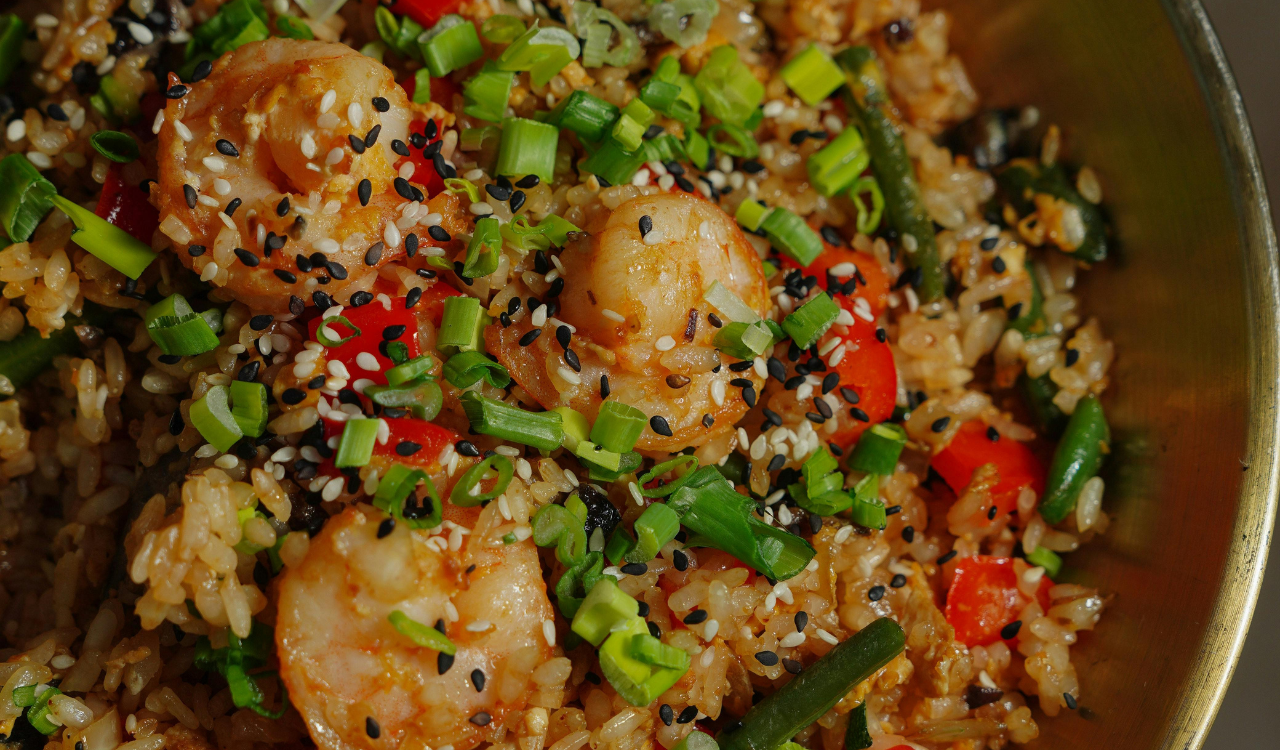Homemade Pesto for Quick Lunches
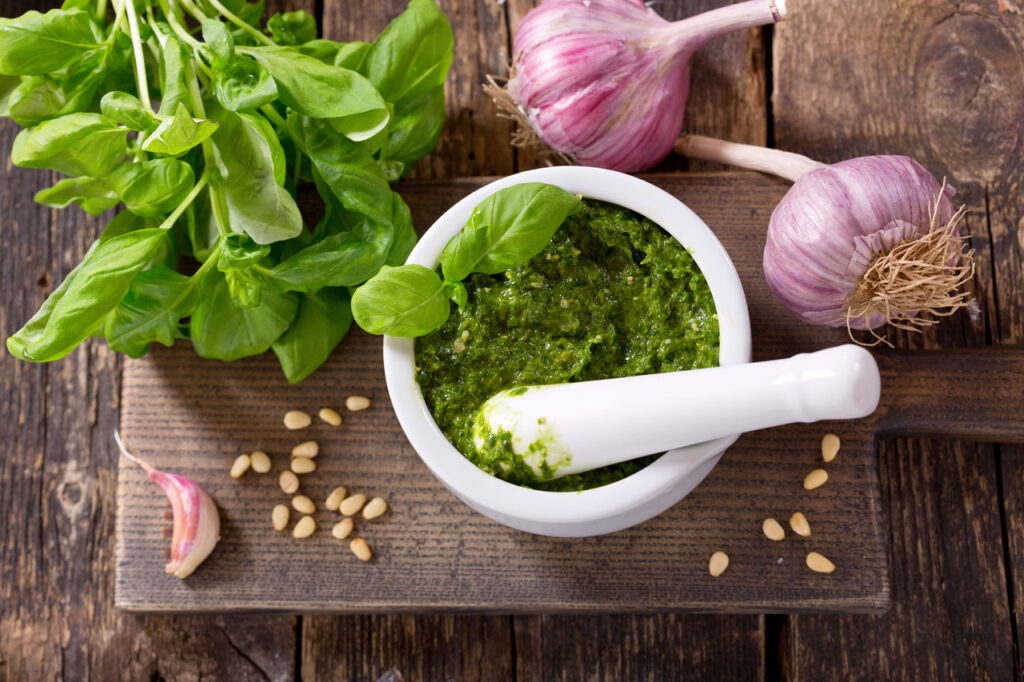
Pesto is one of those sauces that turns a plain lunch into something special with almost no effort. It’s fast, endlessly flexible, and doesn’t require cooking, just a good blender and a handful of fresh ingredients. Whether you stick with traditional basil and pine nuts or branch out with kale, parsley, or pistachios, homemade pesto adds instant flavor to pasta, grain bowls, sandwiches, or roasted vegetables. Making it yourself means you control texture, salt, and oil, and you can adapt it to whatever greens or nuts you have on hand.
1. Classic Basil-Pine Nut Pesto
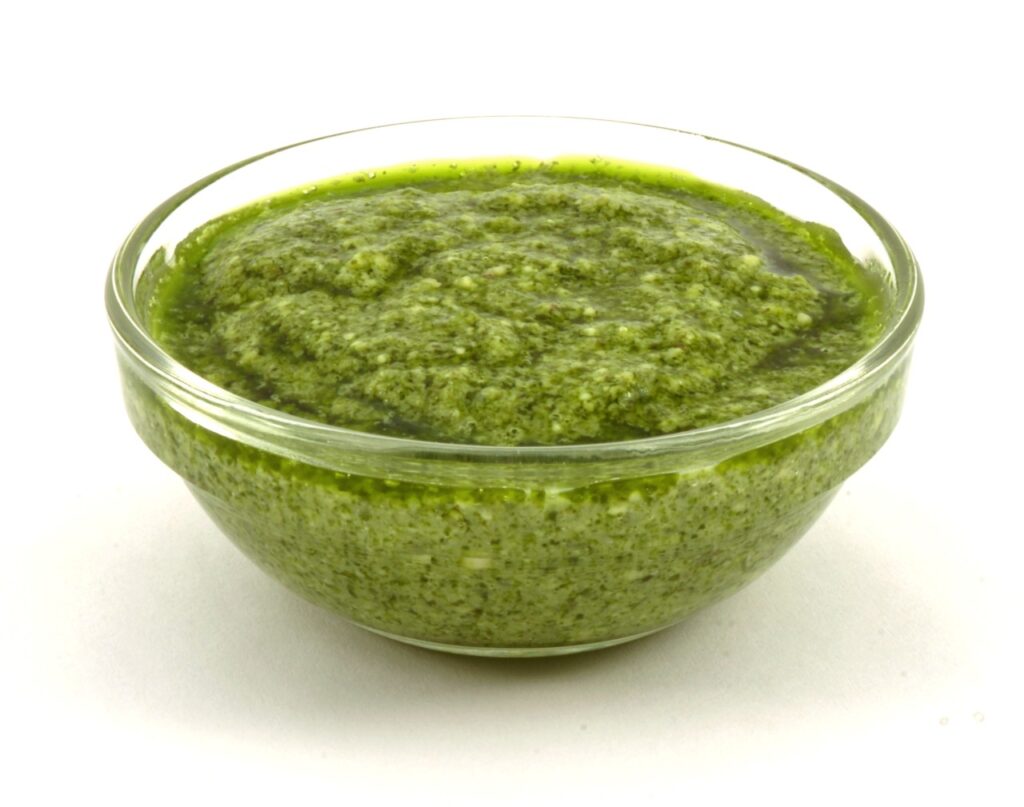
Think of this as the baseline everyone measures pesto against. Fresh basil leaves, toasted pine nuts, grated Parmesan, garlic, salt, and good olive oil, blitzed to a loose, glossy emulsion. The idea is bright herb flavor with honeyed nutty backing and a savory cheese finish that clings to pasta, sandwiches, or roasted veggies. Toast the pine nuts briefly to deepen flavor, but don’t overheat the basil or it will lose vibrancy. If you make extra, press plastic on the surface and add a thin film of oil to keep it emerald between uses. This version is versatile, and because the ingredients are simple, quality matters: the better the basil and cheese, the clearer the pesto’s character.
2. Vegan Basil-Almond Pesto
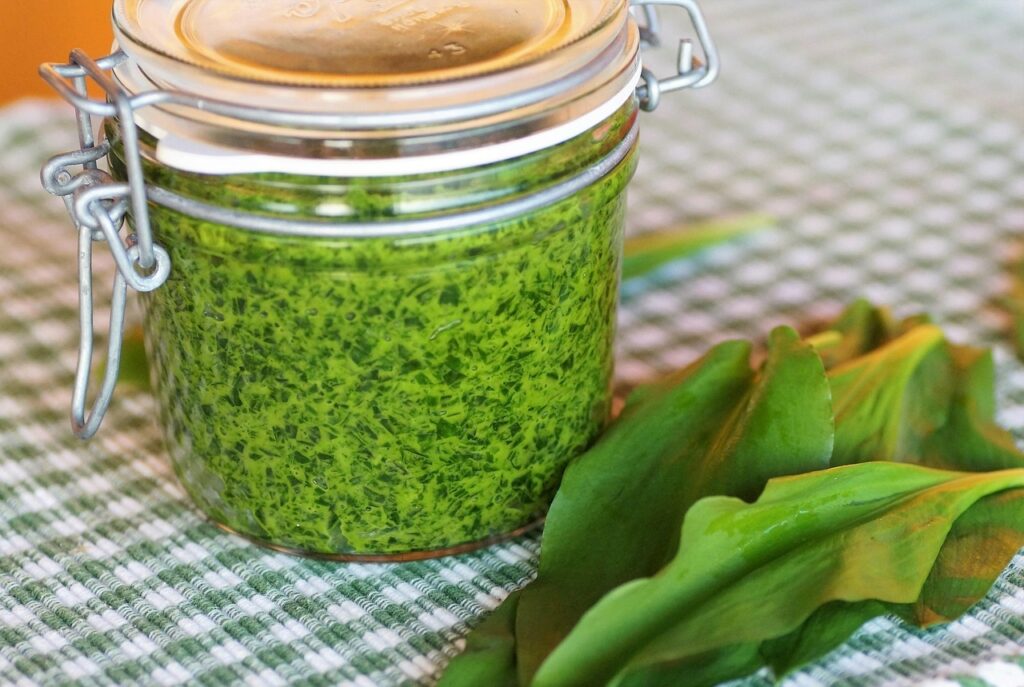
If you want pesto that holds up in sandwiches and hot pans without breaking into oily bits, swap almonds and omit the cheese. Almonds give body and a gentle sweetness that pairs beautifully with basil’s peppery lift. Add a tablespoon of nutritional yeast or a small squeeze of lemon for umami and brightness, then pulse until the texture is coarse or smooth, depending on your preference. The result keeps well refrigerated for several days and freezes nicely in ice cube trays for single-portion use. This dairy-free version is excellent slathered on grain bowls, mixed into grains, or folded into warm pasta with roasted tomatoes.
3. Pistachio Basil Pesto
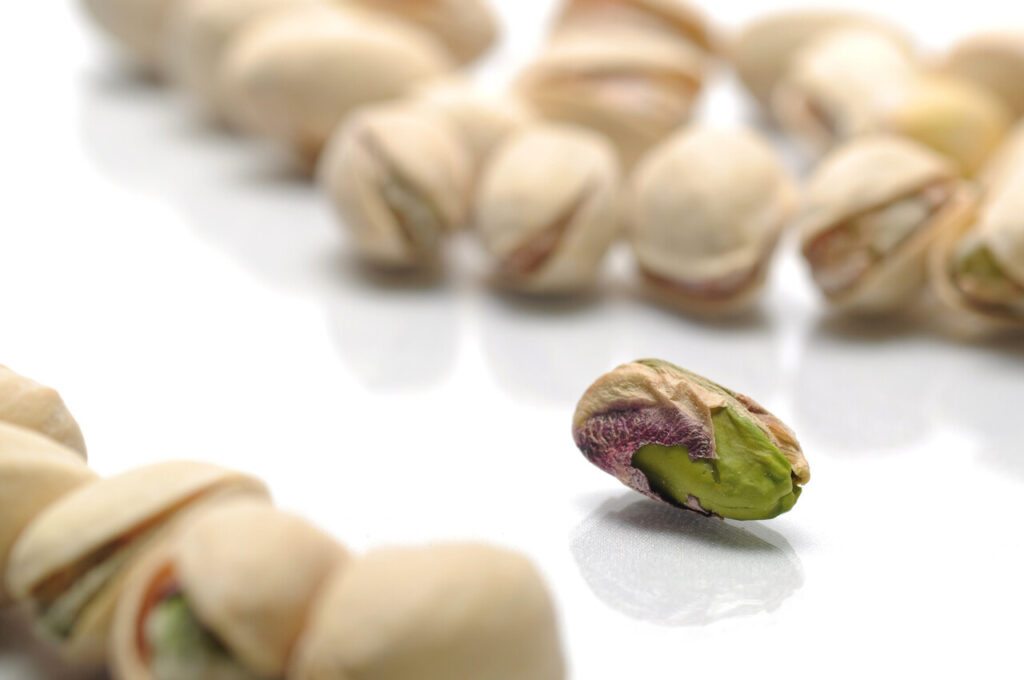
Pistachios shift pesto into a richer, almost confectionary space while still feeling savory. Use shelled, lightly toasted pistachios for their buttery, floral qualities, and add a touch of lemon to avoid cloying sweetness. The green of the nuts plus the basil creates a lush color and a texture that is both creamy and slightly grainy in a pleasing way. Pistachio pesto pairs exceptionally well with seafood, bright cheeses, or spread thinly on grilled bread as an appetizer. Because pistachios are oilier than pine nuts, pulse carefully so you don’t end up with an overly runny sauce.
4. Basil-Walnut Pesto

Walnuts bring an autumnal, slightly bitter edge that gives basil pesto more backbone. Their robust flavor stands up to heartier dishes, making this version ideal for tossing with roasted root vegetables or swirling into bean stews. Toast the walnuts until fragrant and let them cool so their oils remain stable; then combine with basil, garlic, olive oil, and a bit of grated hard cheese if you eat dairy. The result is earthier than the classic, which is useful when you want a sauce that can hold its own alongside bold proteins or smoky grilled items.
5. Kale-Basil Pesto
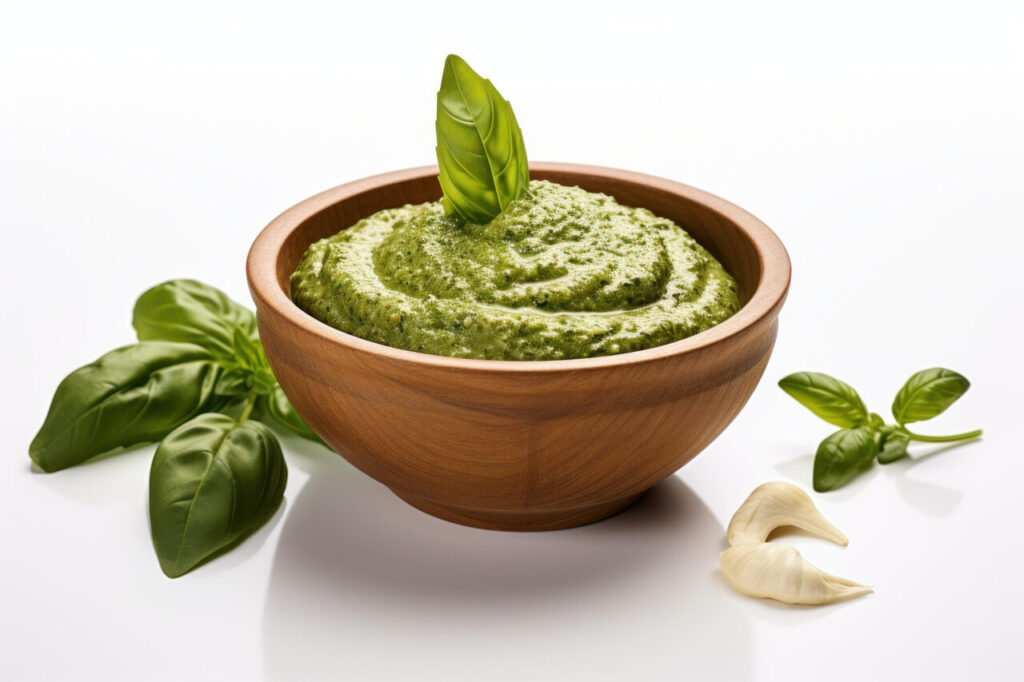
Mixing hardy kale with delicate basil extends your pesto’s nutrition and makes the flavor more complex. Start with a ratio that favors basil so you keep herbaceous brightness, then add blanched, squeezed kale leaves for fiber and color. Nuts like walnuts or almonds provide structure, while a touch of lemon keeps the green flavors lively. Kale-basil pesto is a good way to use abundant kale without making a heavy, bitter sauce; the basil moderates the kale’s assertiveness. Use it to toss with pasta, spread on sandwiches, or blend into soups for an instant green boost.
6. Parsley-Almond Pesto
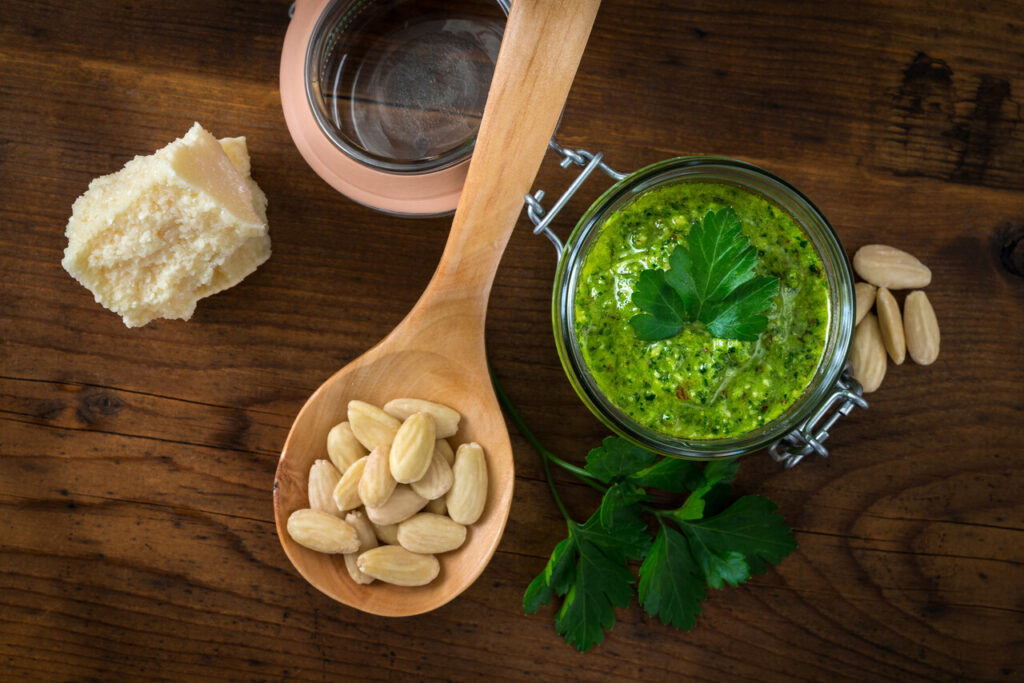
Parsley pesto is the clean, herbaceous cousin that brightens heavy dishes. Parsley’s flat leaf, grassy notes cut through rich proteins and starchy sides, and almonds help create a silky mouthfeel. Add garlic and lemon to lift the profile, and consider a small bit of chili flake for warmth. This pesto shines spooned over grilled fish, mixed with potatoes, or used as a condiment for roasted chicken. Because parsley is less volatile than basil, this pesto can keep slightly longer in the fridge when stored properly, and it freezes well for quick weekday lunches.
7. Spinach-Basil Pesto
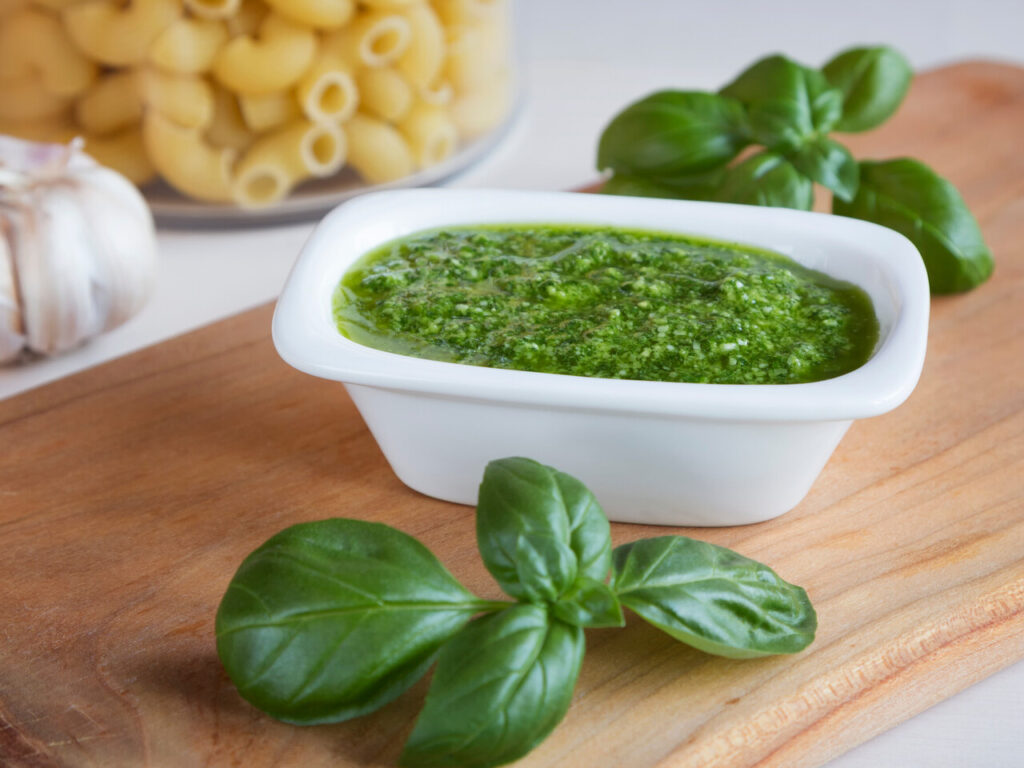
When you want the color and nutrition of spinach without losing that signature basil flavor, blend the two greens for balance. Spinach adds volume, smoothness, and iron, while basil contributes the aromatic lift that defines pesto. Use a firm nut like almond or cashew to stabilize the texture, and consider reducing the garlic if you plan to use the pesto on raw vegetables or as a sandwich spread. Spinach-basil pesto is kid-friendly, mild, and adaptable: stir it into ricotta for a quick spread, swirl it into soups, or toss it with hot pasta and lemon for a fast, green lunch.
8. Lemon-Boosted Classic Pesto

A squeeze of lemon juice and a touch of zest elevate classic pesto into something that feels brighter and more modern. Lemon cuts through the oil and cheese, giving each forkful lift and making the pesto sing with freshness. Use lemon sparingly and taste as you go, because too much acid flattens the herb character. This version pairs especially well with seafood, delicate roasted vegetables, or as a finishing dollop on grilled chicken. It also refreshes well after refrigeration; a quick stir and a little extra oil will bring the texture back to a saucy gloss suitable for tossing with warm pasta or slathering on bread.




